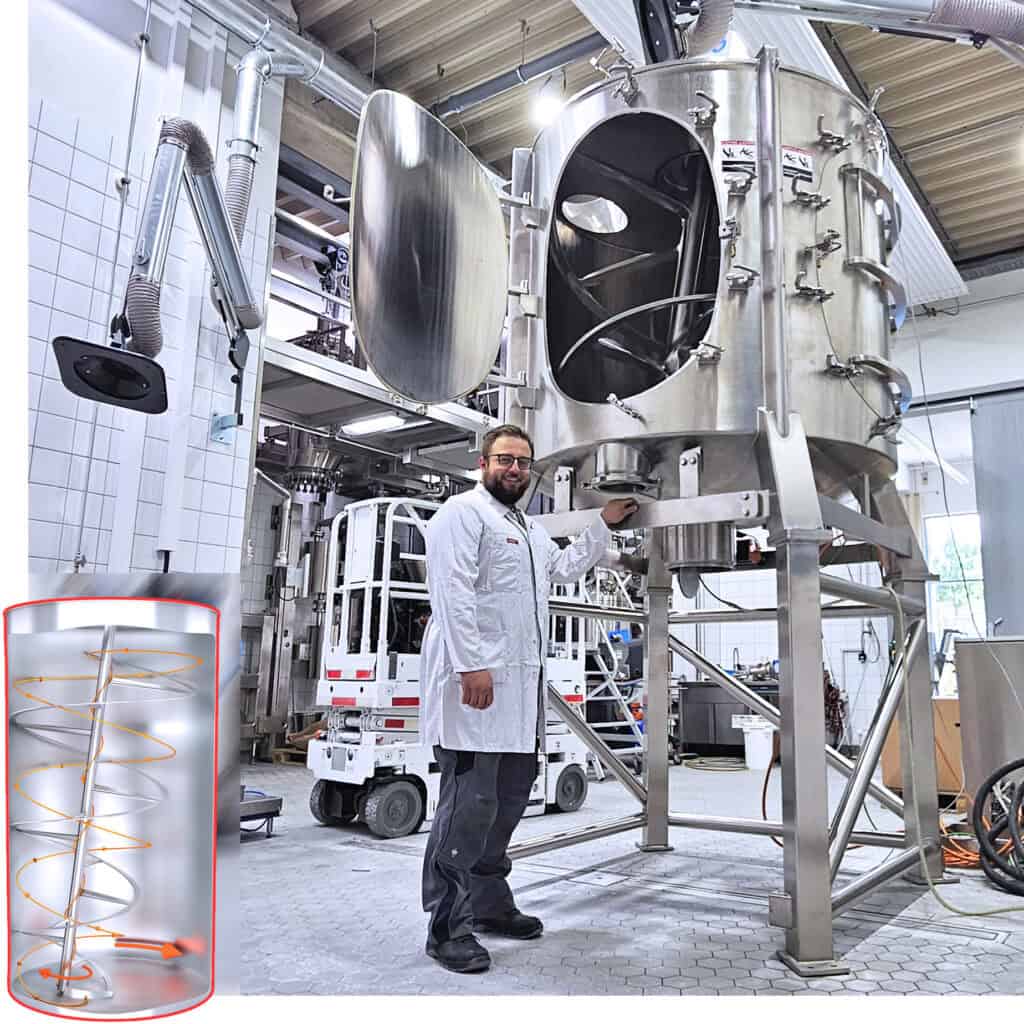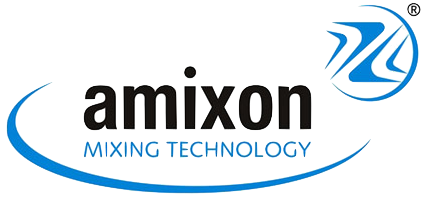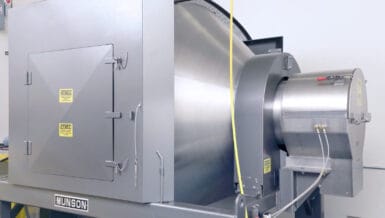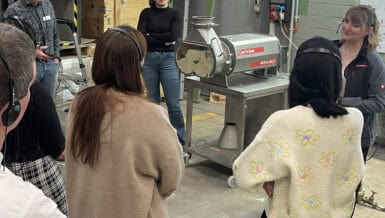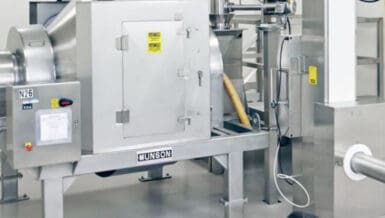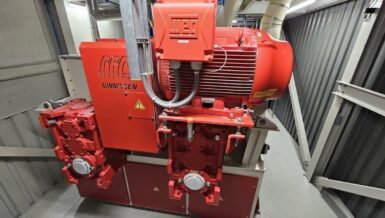Process Principle and Mixing Performance
The mixer combines a slowly rotating spiral mixing tool with an orbital movement of the shaft above a dome-shaped mixing chamber base. This ensures that all areas of the mixing chamber are continuously engaged, preventing dead zones and enabling precise mixing at high dilution ratios (up to 1:100,000). The technology is effective even for moist, cohesive, poorly flowing, or fragile materials, which are often difficult to process in conventional systems.
Energy Efficiency and Gentle Handling
Due to the slow rotational speeds and efficient design, the Gyraton® mixer operates with minimal electrical power consumption. At the same time, the mechanical stress on the product is extremely low. This makes the system particularly suitable for applications in which particle integrity, product structure, or sensitive components must be preserved.
Design Features
- Batch sizes from approx. 10 m³ to 70 m³
- Space-saving design with vertical orientation
- Hygienic shaft sealing, mounted and driven exclusively at the top
- ComDisc® discharge system for almost complete emptying of the mixer
- Easy-to-clean design with minimal dead space, ideal for frequent product changeovers
Application Range
The Gyraton® mixer is used across a wide range of industries, including:
- Food industry: e.g. instant beverages, spices, tea blends, starches, baking mixes, and dietary supplements
- Chemical industry: e.g. functional additives, polymer blends, pigment powders, detergents, fertilizers
- Pharmaceutical and nutraceutical sectors: e.g. vitamin preparations, excipient blends, mineral powders
- Powder metallurgy and materials: e.g. metal powders, ceramic compounds, technical granulates
Its ability to handle both dry and moist mixtures with consistent quality makes it a valuable asset for production environments with complex raw material properties.
Test Mixing in the amixon® test center
To support product and process evaluation, test mixing trials can be conducted at the amixon® test center. Customers have the opportunity to process their own products under realistic conditions. This helps to verify mixing results and provides a solid basis for further process and equipment planning.



